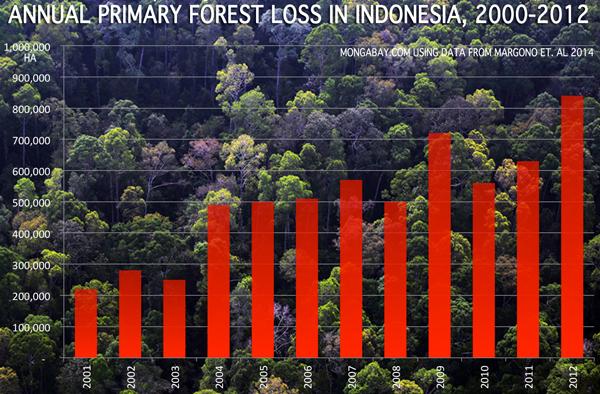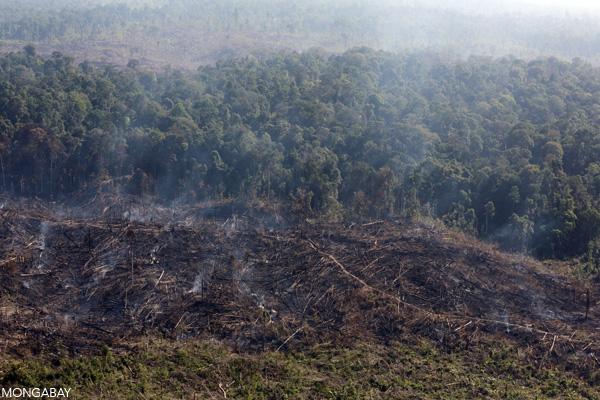The Indonesian government has agreed on reference levels for measuring reductions in emissions from deforestation and forest and peatland degradation, reports Antara.
The Forest Reference Emission Levels (FREL) will be used as a baseline for discussion at climate talks in Lima, Peru as well as potential future agreements on performance-based compensation for curbing emissions from the forestry sector. The levels were determined after a long consultative process, according to Heru Prasetyo, the head of Indonesia’s REDD+ Agency.
“This is the result of all the hard work put in for nine years by the BP REDD+ and relevant ministries/institutions to formulate one exact figure to lower deforestation and forest degradation rates,” he was quoted as saying.
The baseline consists of four principle numbers reflecting average annual deforestation and degradation on peat and mineral soils between 2000 and 2012:
Deforestation
- mineral land: 525,516 hectares per year
- peatlands: 145,904 hectares per year
Degradation
- mineral land: 409,073 hectares per year
- peatlands: 16,223 hectares per year
Those numbers were then used to estimate projects emissions from those sources at 439 million metric tons of carbon dioxide per year by 2020. That amounts to just over 1 percent of current CO2 emissions from fossil fuels use.
Most of Indonesia’s greenhouse gas emissions presently come from destruction and degradation of forests and peatlands. Despite a nationwide moratorium on new forestry concessions, Indonesia has experienced rising deforestation in recent years. In 2012, forest loss in the country topped that of the Brazilian Amazon, which houses that largest extent of tropical forest in the world.
Unlike Brazil, Indonesia has done a poor job tracking forest loss. Ministry of Forestry estimates for annual deforestation are wildly divergent from figures developed by independent observers. However that may be changing. There is an effort underway to develop a unified map of land use and concessions that would improve transparency -- and accountability -- in Indonesia’s forestry sector. The process has been supported by the Norwegian government, which in 2010 pledged up to a billion dollars in aid based on Indonesia’s success in reforming forest management and curbing deforestation.
This article was originally written and published by Rhett A Butler, the head administrator for news.mongabay.com. For the original article and more information, please click HERE.




